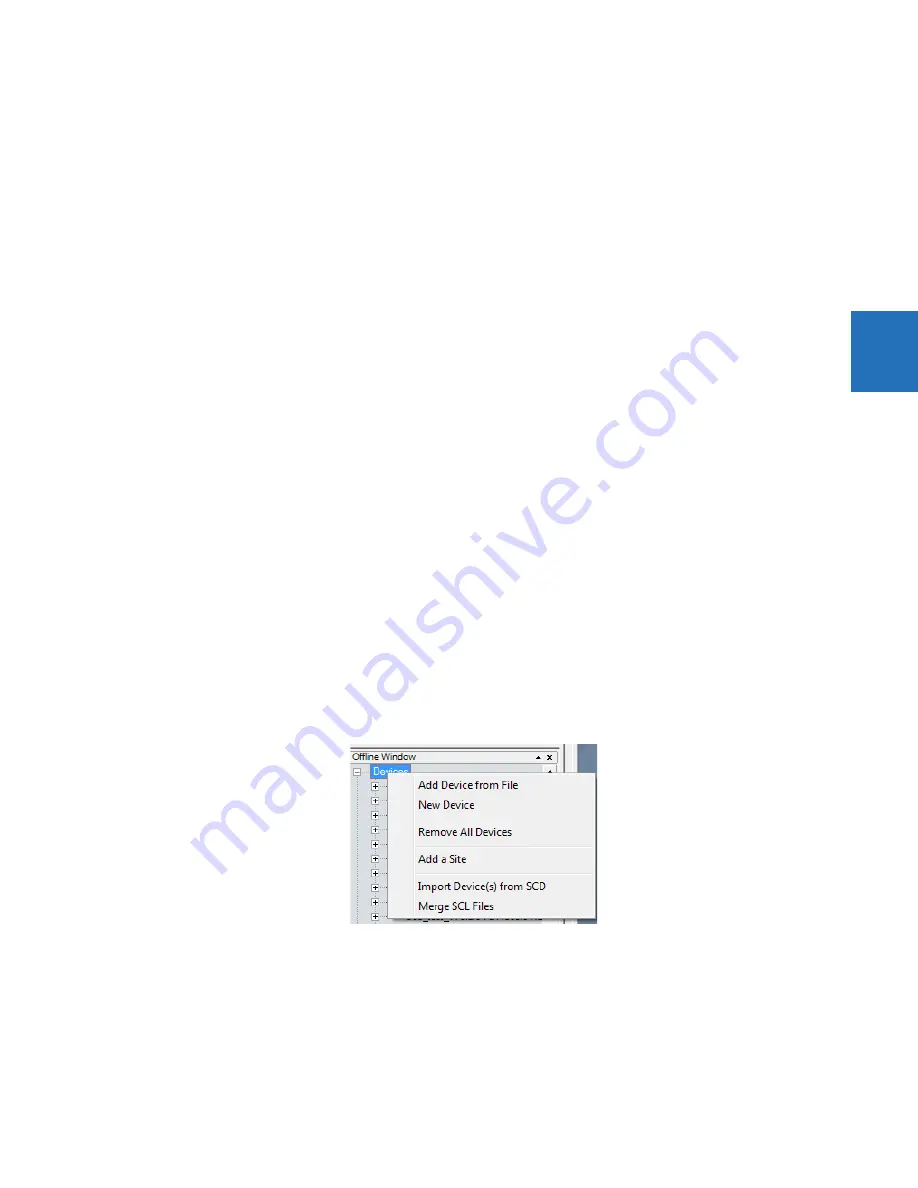
CHAPTER 3: IEC 61850 COMMUNICATION
CONFIGURING THE UR USING SCL
UR FAMILY – COMMUNICATIONS GUIDE
3-21
3
•
Configuring addressing and timing parameters of GOOSE messages
•
Adding datasets for publishing GOOSE messages
•
Configuring GOOSE subscription
•
Configuring addressing and timing parameters for reports
•
Adding datasets for reports
•
Configuring command models and timeouts
The following conditions apply to ensure that the resulting configuration is not rejected by the UR device or EnerVista UR
Setup:
•
In UR 7.40 and later, new LDevice elements can be added, LN elements other than those originally in the Master logical
device can be moved between LDevice elements, and LDevice elements containing no LN elements can be removed
•
The DataTypeTemplates element cannot be changed in a way that removes, adds, reorders, or changes properties of
data objects or data attributes, although the template id attributes can be changed provided it is done consistently
throughout the file so as to not affect the information model. EnumVal elements can be removed or reordered.
•
Unused SubNetwork, GSE, and Address elements in the Communications element can be omitted as long as one
SubNetwork and Communications element remains; the settings corresponding to omitted attributes are left at their
factory default value. BitRate elements can be added to SubNetwork elements, but do not affect the fixed UR bit rate.
Note that Access point S1 is physical Ethernet port 1, access point S2 is physical Ethernet port 2, and access point S3
is physical Ethernet port 3.
•
Some other additions/changes can be tolerated on import, but are not preserved on export
If the configuration generated by the SCT in the SCD is complete, the next step is to use it to program each of the IEDs. For
UR devices, there are several ways in which this can be done. A CID file can be sent directly to the UR device using any of
the supported file transfer protocols. CID files, which can be directly generated by some SCTs, are just the SCD with
configuration information not required by the target IED removed.
Alternatively, the SCD can be imported by EnerVista UR Setup, which generates URS files for each UR device that the SCD
contains, and the configuration in those URS files sent to the URs.
To import a SCD or CID into EnerVista UR Setup, right-click on either the Offline Window label or the
Devices
label in the
Offline Window, select
Import Devices from SCD
, and enter a name for a URS file for each of the IED configurations being
imported. The default URS file name is the IED name in the SCD/CID. For writing settings from the imported files to the UR
devices, connect to each UR device in the Online Window, and drag-and-drop the URS file in the Offline Window to the
appropriate UR device in the Online Window. When the SCD file has more than one UR device in it, the system prompts for
the name to use.
Figure 3-10: Importing a settings file
Note that there is no option to import IID files. This is because it is not called for in the standards and there is little need.
If the configuration generated by the SCT is not complete, which is typically the case, proceed as in the previous paragraph
to import the SCD/CID, complete the configuration in the URS files using EnerVista UR Setup, and then drag the URS files to
the UR devices.
For problems found during the commissioning stage that require a setting change, setting changes can be made using the
front panel, EnerVista UR Setup, or the SCT. Changes made at any level in the SCT/UR Setup/UR device chain can be
propagated down using the methods described in the preceding paragraphs. It is important that any changes made at a






























